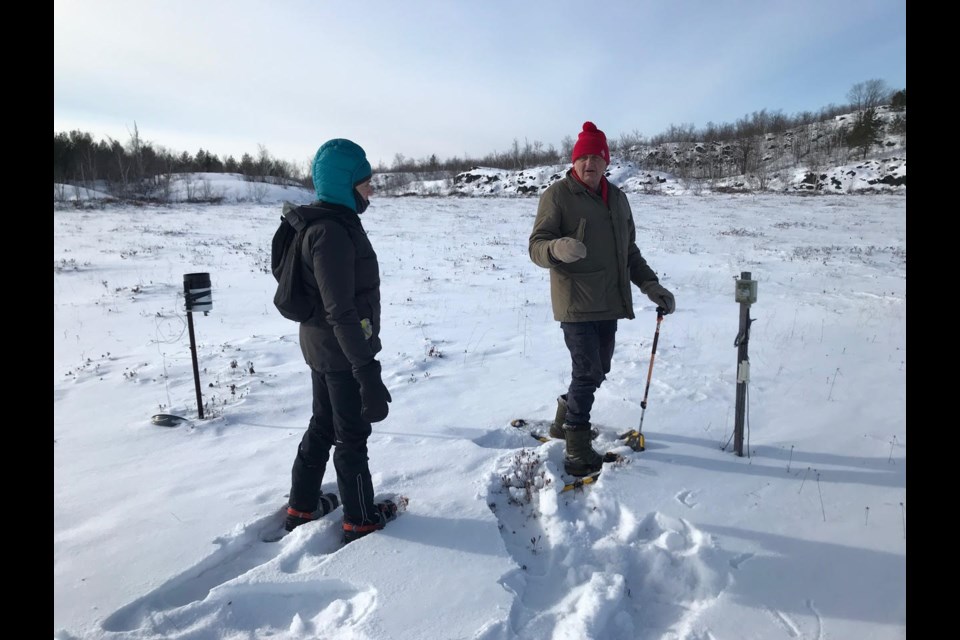While I was tromping across what appeared to be non-descript flat terrain on snowshoes in the Laurentian University Greenspace on a frigid February day, I was intrigued when told I was walking over a 4,000-year-old bog, cradling a 10-meter-deep pocket of vibrantly alive peat soil. A bog or a fen? Dr. Peter Beckett, professor emeritus of reclamation, restoration and wetland ecology at Laurentian University, explained the difference and the importance of wetlands during an interpretive walk through the LU Greenspace in celebration of World Wetlands Day.
The “Laurentian Peat Bog”, as it is known among wetlands biologists, has been and continues to be the site for international research. From what appear to be simple posts dotted across the bog, samples are taken to analyze peat cores, nutrients, minerals, pH, and methane and more; results of which have provided answers on the impact of past industrial acidification and are already contributing knowledge about the effect of climate change.
Following 3.5 kilometres of trails, Dr. Beckett took us to various viewpoints from which we saw other undisturbed wetlands within the LU Greenspace. This is good news for the Ramsey Lake (a City of Sudbury drinking water source) and Nepahwin Lake watersheds. These wetlands provide fresh water storage to moderate flooding and drought, help filter sediment and contaminants from runoff to the lakes, provide carbon sinks to help mitigate climate change and support biodiversity hot spots.
Feb. 2 was the first year that World Wetlands Day was observed as a United Nations international day. This UN designation affirms the importance of wetlands contribution to sustainable development and human well-being.
It's an appeal to invest financial, human and political capital to save the world’s wetlands from disappearing and to restore those we have degraded1.
One hopes that decision makers considering the potential sale of LU real estate assets will heed the UN appeal and save the LU Greenspace wetlands from disappearing so that that our community can continue to benefit from the ecosystem’s contribution to climate change research, sustainable development and human well-being.
Mandy Hey
Greater Sudbury
